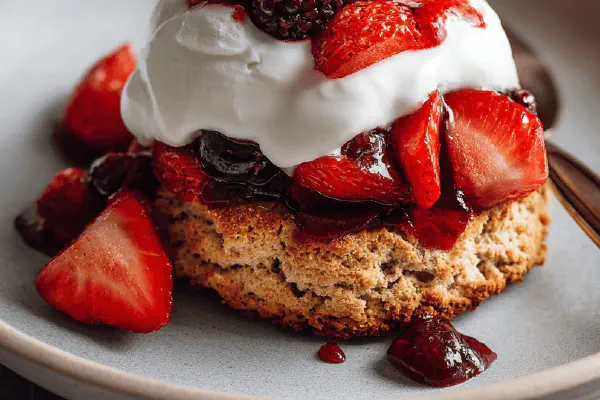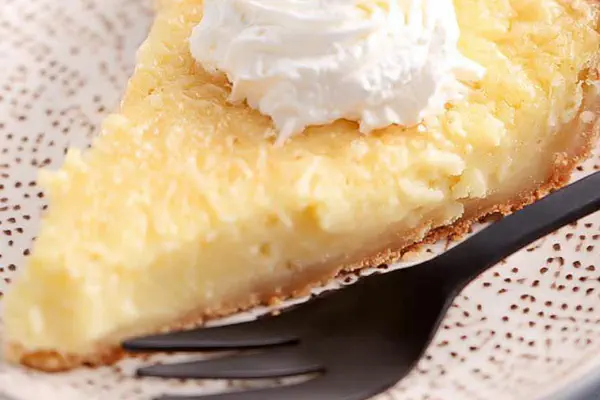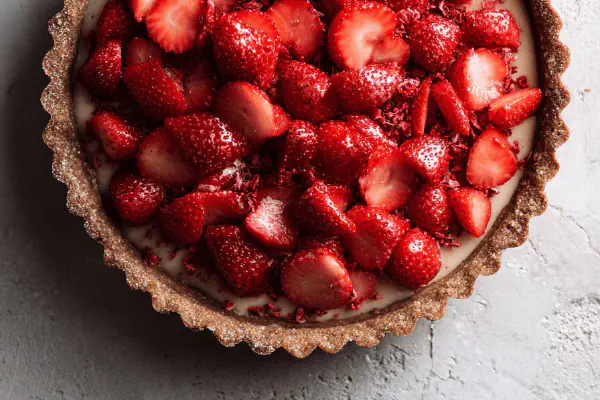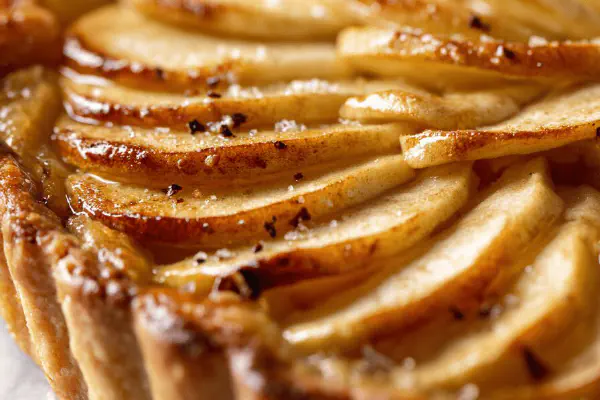Quick Rustic Shortcakes

By Emma
Certified Culinary Professional
Ingredients
- 190 ml spelt flour (1 cup minus 1 tbsp)
- 4 ml baking soda (3/4 tsp)
- 5 ml cream of tartar (1 tsp)
- 50 ml light brown sugar (1/4 cup packed)
- 1 ml fine sea salt (1/4 tsp)
- 50 ml unsalted butter, extra cold cubes (1/4 cup plus 1 tbsp)
- 125 ml buttermilk, chilled (1/2 cup)
- Milk for brushing
- 10 ml (2 tsp) fine sugar for sprinkling
- Whipped cream with lemon zest (for garnish)
- Fresh mixed berries, macerated 15 min with 1 tsp sugar, splash lemon juice (for garnish)
About the ingredients
Method
Preheat oven setup
- Position rack mid-oven. Heat oven to 175 °C (350 °F). Line cookie sheet with parchment, crease ahead to prevent sliding. Butter chunks must be nearly frozen; I keep a bowl in freezer 'til knife ready.
Dry mix blend
- In food processor bowl, dump spelt flour, baking soda, cream of tartar, brown sugar, salt. Pulse a handful to combine evenly. No one wants pockets of powder ruining texture.
Butter incorporation
- Add butter cubes. Pulse short bursts, barely 10 seconds total, until coarse crumbs form. Important not to overprocess or you'll wreck flakiness. Pebble-sized bits still visible -- that’s the goal.
Liquid addition and dough formation
- Pour in buttermilk slowly. Pulse once or twice, watch dough just start to clump. Too wet? Halt. Too dry? Drip another tablespoon of buttermilk, never drown the dough. Remove promptly.
Shaping and portioning
- Floured wooden board serves best. Pat dough into a rough square about 14 cm (5.5 in). Divided into four uneven pieces works fine, rustic look matters more than perfect cuts. Press gently, don’t knead.
Egg wash alternative and sugar sprinkle
- Brush tops lightly with milk — buttermilk sometimes leaves spots, milk is smooth here. Dust with fine sugar for crunchy finish and caramel sparkles under heat.
Baking and watching
- Slide sheet in oven. The key: watch edges turn amber, tops a soft golden blush, 18-22 minutes depending on your oven temp variability. Smell a faint butterscotch aroma? Getting close.
Cooling and assembly
- Remove from oven, transfer to rack immediately. Cool 10 min or less, still warm but won’t collapse when sliced horizontally.
Serve with twist
- Cut each shortcake in half horizontally. Spoon lemon zest whipped cream thickly on bottom half, add macerated berries a generous heap, top with second half. Tastes like summer even in late winter.
Pro tips and alternatives
- No food processor? Use pastry cutter or two knives to cut butter until pea-sized chunks, then fold liquids gently with fork laboriously fast. Spelt flour yields more chewy texture; swap up to half with pastry flour to lighten. No buttermilk? Add 1 tsp lemon juice or vinegar to milk, rest 10 minutes. Brown sugar deepens flavor but white ok in pinch. Watch dough feel, sticky means too wet, add flour sparingly—dry means crumbly, add liquid carefully. Parchment prevents scorching bottoms; clean metal absorbs too much heat.
Cooking tips
Chef's notes
- 💡 Cold butter not soft, freeze if needed. Chop into cubes, pulse in food processor quick bursts only. You want pea-sized, coarse crumbs; too fine ruins flakiness. Butter melting kills texture, no exceptions. If no processor, two knives or pastry cutter, fast and rough. Dough texture is a balance, slightly sticky but not wet or dry. Adjust buttermilk carefully—add by tablespoon, pulse few times. Watch dough cling together, not slump or crumble. Immediate shaping, no overhandling. Flour board well but don’t add extra flour or toughens happen.
- 💡 Sugar on top is not just sweet dusting but key for crackly golden top. Milk brushing avoids uneven spots from buttermilk, which sometimes leaves mottled surface. Brushing lightly, thin even layer, then sprinkle fine sugar. Oven heat caramelizes quickly, watch edges amber, tops flush with light gold—not dark. The aroma is a clue: faint butterscotch signals readiness, not timer alone. Open oven briefly if unsure, feel for bubbles forming under crust; that’s heat penetration at work.
- 💡 Baking timing varies by oven, ambient temp—don’t fixate on minutes. Look for visual and aroma signs: amber edges; golden blush tops; subtle caramel scent. Color beats clock. Cooling shortcakes on a rack immediately after oven stops stops residual heat cooking and soggy bottoms. Cut warm but not hot to avoid collapse or crumbly breaks. Layer lemon zest whipped cream thick, enough to keep berries from soaking base, makes each bite bright and textured. Macerate berries at least 15 minutes with lemon juice and sugar for juicy acidity balance.
- 💡 Substitutions common but affect texture and rise: no buttermilk? Add a tsp lemon juice or vinegar to milk, rest 10 min. Baking soda plus cream of tartar replaces baking powder, sharper lift, tang from acidity, avoids metallic bitterness baking powder can give. Brown sugar packs moisture and richer color unlike white, but white okay if brown not on hand. Spelt flour swaps with pastry flour up to 50/50 to soften heavier, chewier bite. Butter must be real. Margarine or soft fats won’t hold crumbs. Parchment essential: direct pan contact scorches bottoms, uneven bake.
- 💡 Handling dough fast is key, pulses in machine or rapid cutting if by hand. Don’t knead. Kneading develops gluten, toughens crumb. Dough chunks should barely hold together. Rough squares sized about 14 cm or so. Irregular portions add rustic aesthetic, no need for even quarters. Milk brush instead egg wash for less shiny but better even crust. Sugar sprinkled before baking caramelizes, adds faint crunch. Cooling about 10 minutes lets structure set but keeps warmth for cutting and serving. Trust aroma and crust color over timers or feel alone.
Common questions
How to know if dough is correct moisture?
Sticky but not sloshing, shines slightly when pulsed. Dry? Crumbly, add bit buttermilk dropwise. Wet? Too sticky, won’t hold shape. Watch dough coherence, pulse few times only. No drowning with liquid. Clumping dough, not mush.
No food processor?
Use pastry cutter or two knives. Chop cold butter fast into pea-size chunks. Fold dry mix then liquids quickly with fork. Work fast to keep butter cold, flaky texture depends on it. Avoid overmixing or tough dough happens. Chill dough before shaping if soft edges appear.
What signs show shortcakes are done?
Look for golden blush on top, amber edges. Smell faint butterscotch aroma. Watch for tiny bubbles under crust when baking. Timer is guide only. Color and scent are better clues. Avoid dark spots or raw centers.
Can shortcakes be stored?
Cool fully first. Wrap in foil or container air-tight. Refrigerate up to 2 days, reheat in low oven to regain crisp edges. Freeze wrapped for 1 month, thaw at room temp, crisp up in oven. Avoid microwaving—makes soft, soggy crust.



